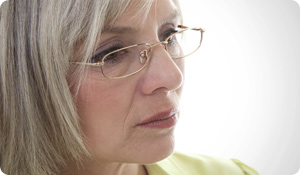
While most people "of a certain age" are healthy and living full, productive lives, growing older often comes with a few aches and pains. Not surprisingly, as we age and change, the small pains grow into larger, more difficult to manage ones. Here, the 4 most common pains we experience as we age and how to treat them.
1. Headaches. Everybody gets one once in a while and according to the National Headache Foundation 90 percent are stress related, tension headaches. Getting older isn't for the faint of heart and many older adults are worried about aging, finances, medical issues and more. Older adults might also not be making enough time for exercise and other stress management techniques. The result is a generation of baby boomers with booming headaches.
Headaches can be a sign of serious conditions including hypertension, vascular and circulatory problems and prescription side effects. If headaches are more than an occasional problem, it's time to see the doctor.
2. Achy joints. Osteoarthritis is a wear and tear injury that develops in overused bones and joints. The most common areas are shoulders, knees, hands, hips and feet. According to the National Institutes of Health, repeated impact eventually thins or wears away the cartilage that cushions the ends of the bones in the joint. As a result, the bones rub together and cause a grating sensation. This reduces joint flexibility, bone spurs develop and the joint swells. Usually, the first symptom of osteoarthritis is pain that gets worse after exercise or immobility. Treatment includes medication, exercise, physical therapy, joint splinting and, for seriously damaged larger joints (knees and hips), joint replacement surgery.
3. Back pain. A lifetime of lifting, bending and twisting can add up to a real pain in the back. Low back muscles tense and tighten in response to irritated bones and nerves. In addition to arthritis, sciatic pain is a common complaint for older adults. The sciatic nerve runs from the spine, through the buttocks and down the legs. As spinal discs deteriorate, sciatic nerves can become irritated. It may feel like a mild ache but its also sometimes experienced as a jolt.
Yoga, Pilates and other strength and flexibility exercises are very successful in treating low back pain and may, in fact, be more effective than medication and surgery. Other alternatives include chiropractic treatment, massage and acupuncture.
4. Gastrointestinal pain. Stomach aches, heartburn and indigestion are common tummy troubles that occur as we age. If seniors aren't eating a healthy diet, getting enough exercise or are taking certain medications, they may become constipated and/or unable to digest foods as well as they used to. he solution? Diet and exercise. If adding more fruits, veggies, water and exercise don't do the trick, check with your doctor about more serious concerns.
Don't let aches and pains hold you back. They don't have to come with the territory of aging if you take good care of yourself. Improve your health and quality of life by improving your lifestyle.
Sources:
National Institute of Health
National Institutes of Arthritis
National Headache Foundation
http://www.headaches.org/





